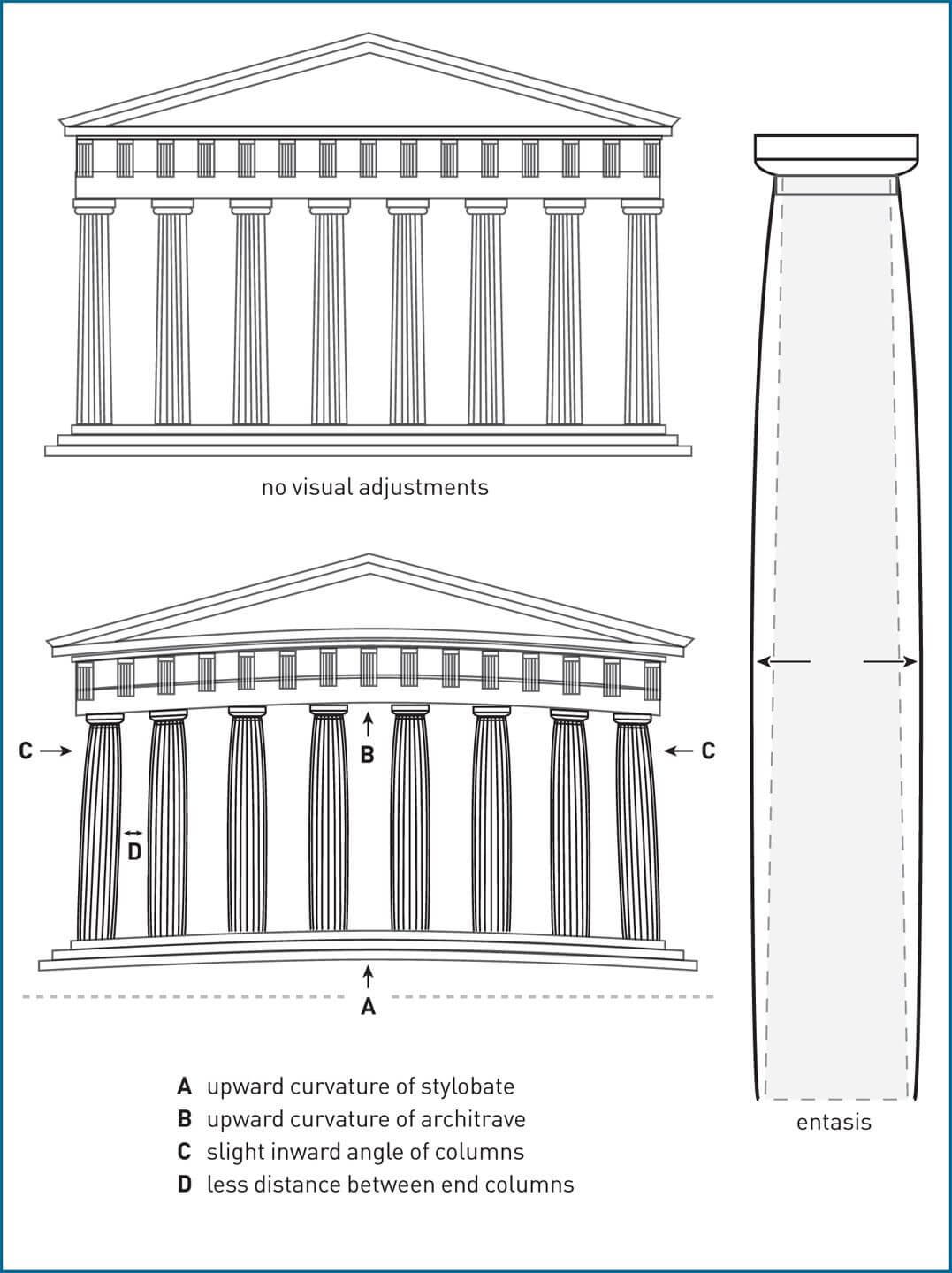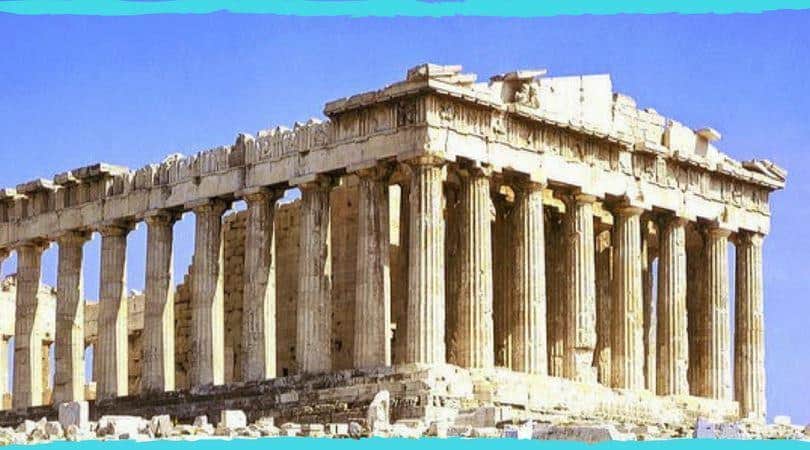The Parthenon, a stunning embodiment of ancient Greek architectural excellence, has long been celebrated for its visual harmony and seemingly flawless design. However, what many may not realize is that its perfection is not purely a product of precise engineering and measurement. Instead, the ancient architects employed a series of ingenious optical illusions to correct visual distortions inherent to human perception, resulting in a monument that appears straight, balanced, and majestic from all angles.
The Subtle Curve of the Stylobate
One of the most well-known optical tricks in the Parthenon is the gentle upward curve of the stylobate—the base on which the temple’s columns rest. To the casual observer, the stylobate appears perfectly horizontal, but in reality, it subtly rises in the middle. This upward curve, designed to counteract the natural tendency of the human eye to perceive straight lines as sagging over long distances, ensures the structure looks solid and grounded. Without this curve, a perfectly level base would create the illusion of a sinking, unstable foundation, undermining the temple’s imposing presence. This adjustment is a testament to the architects’ understanding of how the human eye interprets visual lines and depth.

The Bulging Columns: Entasis
The columns of the Parthenon, too, are not perfectly straight. Instead, they feature a technique known as entasis, where the middle of each column subtly bulges outward. While this may seem counterintuitive, it serves a critical purpose: without this bulge, perfectly straight columns would give the optical illusion of being concave, a visual distortion that makes them appear weaker and less stable. The entasis adds to the sense of strength and solidity, creating the illusion of towering columns that support the massive weight of the structure. This slight curvature prevents the columns from appearing thin or fragile, enhancing their visual impact and aesthetic appeal.
Corner and Inward Leaning Columns
In addition to the entasis, the Parthenon’s architects made other refinements to further correct visual distortions. For example, the corner columns, positioned where the building’s vertical and horizontal lines converge, are slightly thicker than the others. This adjustment compensates for the visual distortion that occurs when a vertical element is positioned at the edge of a structure. If the corner columns were the same width as the others, they would appear weaker or narrower due to their position, disrupting the overall balance of the temple.

Furthermore, the columns are ever so slightly tilted inward, which counters the natural tendency of the human eye to perceive vertical lines as leaning outward when viewed from a distance. This inward lean enhances the Parthenon’s sense of structural unity, making the columns appear perfectly aligned and harmonious.
The Curved Entablature: Horizontal Adjustments
Even the horizontal elements of the Parthenon were carefully designed to correct optical distortions. The entablature, which stretches across the top of the columns, is slightly curved, preventing the beams from appearing to sag in the middle. A perfectly straight horizontal beam would create the illusion of a dip or sagging line due to the way the human eye interprets the length of a line. The slight curve incorporated into the entablature ensures that the horizontal elements of the temple maintain a sense of balance and strength, adding to the overall visual perfection of the structure.

Mastery of Hidden Geometry
The Parthenon’s flawless appearance is not the result of random or simple design, but rather a sophisticated understanding of optics and geometry. By incorporating these optical refinements—subtle curves, inward-leaning columns, and thicker corner supports—the architects created a building that appears perfectly balanced and stable, despite the reality of its complex geometry. The careful application of these adjustments reveals the ancient Greeks’ advanced knowledge of visual perception, and their ability to blend art and science to create an architectural masterpiece.

The Parthenon is more than just a temple; it is a triumph of engineering and a testament to the ancient Greek quest for aesthetic perfection. Through these optical tricks, the structure appears flawless to the human eye, embodying a timeless beauty that continues to captivate visitors and scholars alike.
Enduring Legacy of the Parthenon’s Visual Genius
Today, the Parthenon stands as a symbol not only of the grandeur of ancient Greece but also of the extraordinary skill of its architects. The optical illusions embedded in its design are a remarkable feat of engineering, ensuring that the temple remains visually perfect despite the complex forces at play. The interplay of art and science in the Parthenon’s design continues to influence modern architecture, proving that the ancient Greeks’ understanding of optical perception was far ahead of its time. Through this mastery of hidden geometry, the Parthenon has become an enduring symbol of architectural excellence and a timeless masterpiece that still commands admiration and awe across the centuries.

